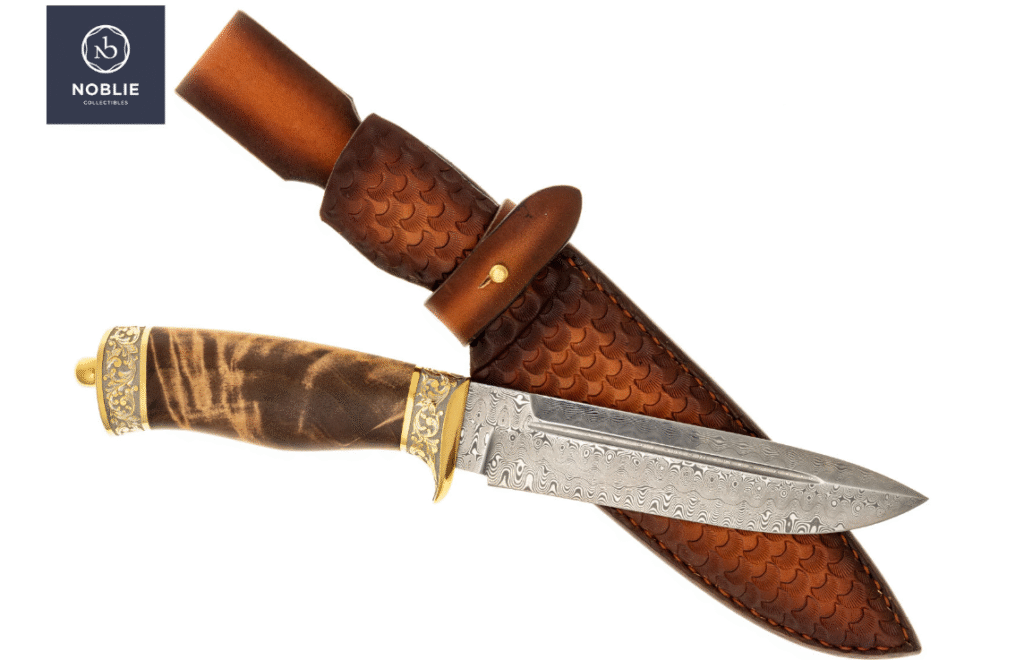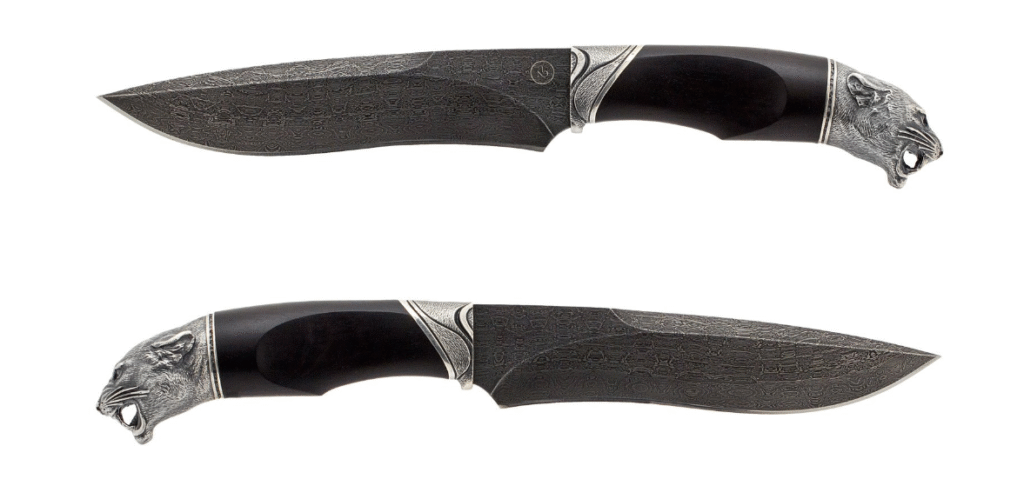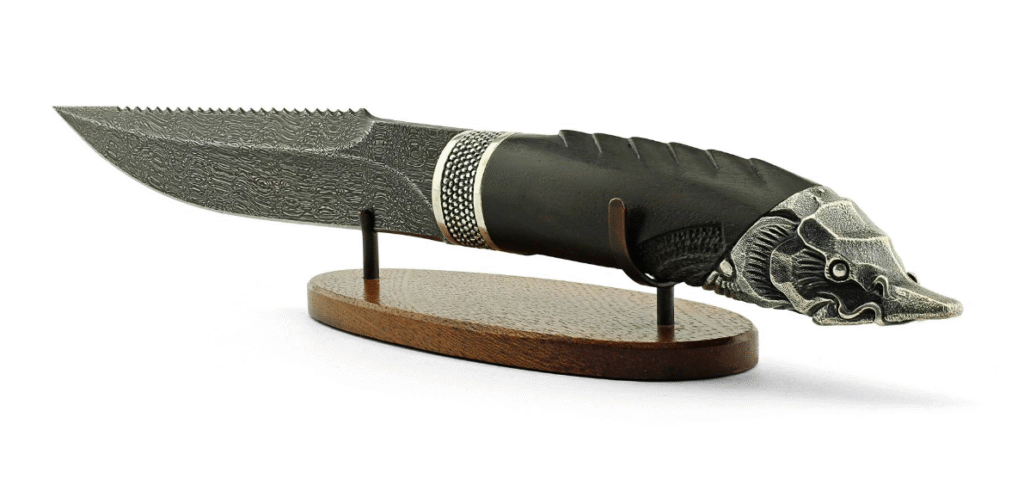How to Recognize a Genuine Damascus Knife: Signs of Counterfeits and Tips for Choosing
Buying a Damascus knife can feel like navigating a minefield. You want an authentic piece with centuries-old craftsmanship, but the market floods with fakes that look convincing in photos. The difference between a real Damascus blade and a printed pattern isn’t just about aesthetics—it’s about performance, durability, and whether your $200 investment becomes a kitchen workhorse or a disappointing wall decoration.
What Makes a Damascus Blade Actually Damascus?

Real Damascus steel results from forge-welding multiple steel layers together. The bladesmith stacks different steel types—typically high-carbon and nickel alloys—then heats, hammers, and folds them repeatedly. Each fold doubles the layers. After 10 folds, you get 1,024 layers. The distinctive pattern emerges when acid etching reveals the contrast between these layers. This process creates a blade with both flexibility and edge retention because the layered structure combines the best properties of each steel type.
From Ancient Syria to Modern Workshops: How Damascus Steel Evolved
True Damascus steel originated in the Near East around 300 BCE. Ancient bladesmiths in Damascus, Syria produced legendary swords from wootz steel imported from India. These blades could supposedly cut silk scarves mid-air and slice through European swords. The original technique disappeared around 1750 CE when wootz steel supplies dried up, and the exact forging method died with the master smiths.
Modern “pattern welded” Damascus represents our attempt to recreate this lost art. In the 1970s, American bladesmiths like Bill Moran revived the layering technique. They initially tried powder metallurgy and even attempted vacuum forge welding—both proved too expensive and unreliable for consistent production. Today’s forge welding with acid etching delivers the visual appeal and functional benefits without requiring mysterious ancient ingredients.
The Pattern Test: What Your Eyes Should Tell You
Examine the blade pattern under good lighting. Genuine Damascus shows irregular, flowing lines that vary in width and intensity. The pattern continues across the entire blade surface, including the spine and tang. Rotate the knife slowly—real Damascus patterns shift and shimmer as light catches different layer angles.
Fake patterns look suspiciously perfect. Laser-etched or acid-printed designs repeat identically across the blade. They sit on the surface like a sticker rather than emanating from within the steel. Check the blade spine—counterfeiters often forget to apply the pattern there.
Expert advice from James Anderson, Master Bladesmith: “I’ve seen customers bring me ‘Damascus’ knives where the pattern literally rubbed off with steel wool. Real Damascus goes through the entire blade thickness. If you see the pattern fading at the edge after sharpening, you bought a fake.”
Does the Pattern Run Deep?
Real layered steel means the pattern penetrates the full blade thickness. Ask the seller if you can inspect a sharpened blade under magnification. The layers should be visible on the cutting edge itself. Some high-end makers include a cross-section photo showing the layers running perpendicular to the blade’s flat surface.

When you sharpen a genuine Damascus knife over years of use, new pattern variations emerge as you grind into different layer depths. Fakes lose their pattern completely after the first few sharpenings remove the surface treatment.
Price Reality Check: The Numbers Don’t Lie
Manufacturing authentic Damascus requires significant labor. A bladesmith spends 15-20 hours forging a single blade—stacking steel, heating to 2,300°F, hammering, folding, and repeating. Add handle fitting, heat treatment, and finishing. Material costs alone run $40-60 for quality steel billets.
A genuine handmade Damascus knife rarely sells below $150. Production Noblie damascus knives with consistent quality start around $80-100 because manufacturers achieve economies of scale while maintaining the forge-welding process. If someone offers “authentic Damascus” for $35, they’re selling you a printing job.
| Price Range | What You’re Actually Getting | Red Flags |
| Under $50 | Printed pattern on cheap stainless steel | Pattern looks identical on every knife, no depth variation |
| $50-$100 | Possibly real but lower layer count (under 100 layers) | Verify maker reputation, ask about steel types used |
| $100-$300 | Genuine pattern-welded Damascus from reputable makers | Should include documentation, maker’s mark, steel composition |
| $300+ | Premium handmade Damascus, exotic steel combinations | Expect custom work, unique patterns, lifetime guarantees |
The Maker’s Mark and Documentation
Legitimate Damascus knife makers stamp or etch their mark into every blade. This mark represents their reputation. Research the maker online—check forums, review sites, and social media. Established smiths have documented work histories and customer testimonials.
Request documentation about the steel types used. Makers should specify combinations like “1095 and 15N20” or “52100 and nickel.” Vague descriptions like “high carbon Damascus” signal potential fraud. Reputable makers also provide care instructions specific to their steel composition.
The Chemistry Test You Can Actually Do
Here’s a simple field test. Apply a few drops of ferric chloride solution (available at electronics stores) to an inconspicuous spot. On real Damascus, the acid etches different layers at different rates, creating contrast. The pattern becomes more pronounced. On printed fakes, the acid either does nothing or removes the pattern entirely.
Warning: This test slightly marks the blade, so only use it if the seller agrees or if you’re testing a knife you already own.
Common Mistakes That Cost You Money
Mistake 1: Judging Quality from Website Photos Alone
Many buyers see stunning Damascus patterns online and immediately purchase. The photos show dramatic contrast and intricate designs.
Why they do it: The images trigger an emotional response. The knife looks like art.
The cost: Professional photographers use specific lighting, angles, and even Photoshop enhancement to make any blade—real or fake—look spectacular. When your $40 “Damascus” arrives, the pattern barely shows under normal light. Some sellers photograph the same genuine blade but ship acid-etched copies. You’ve wasted money on deception and now own a knife that performs like basic stainless steel. Real loss: $30-40 plus the frustration of dealing with returns.
Mistake 2: Ignoring the Tang Construction
Buyers focus entirely on the blade pattern and forget to check how the handle attaches. They assume all Damascus knives are equally built.
Why they do it: The visible Damascus pattern dominates attention. Handle construction seems secondary.
The cost: A full tang (steel running through the entire handle) provides strength and balance. Rat-tail tangs (thin metal rod through the handle) create weak points. Your beautiful Damascus blade snaps at the handle during normal cutting tasks. Even worse, partial tangs on fake Damascus indicate the manufacturer cut corners everywhere. You’ve bought an inherently fragile tool. Real loss: Complete knife failure within 6-18 months of regular use.
Mistake 3: Assuming All “Handmade” Claims Are True
Sellers stamp “handmade” or “hand-forged” on products, and buyers interpret this as guaranteeing authenticity.
Why they do it: “Handmade” sounds artisanal and justifies higher prices in their minds.
The cost: Mass manufacturers apply this label to factory-made knives where humans merely operated machines. Some operations stack pre-cut steel bars, press them in hydraulic forges, then etch patterns—technically “handmade” but lacking true craftsmanship. You’ve paid artisan prices ($100-150) for industrial output worth $30. The blade performs adequately but has no special properties. Real loss: $70-120 in overcharges, plus the disappointment of owning something ordinary instead of exceptional.
The Flip Side: When Damascus Isn’t Worth It
Some professional chefs and butchers deliberately avoid Damascus knives despite their beauty. Their strongest argument: performance doesn’t justify the cost premium.
A well-made monosteel knife from VG-10 or AUS-10 stainless steel costs $60-80 and delivers identical edge retention and corrosion resistance. The Damascus pattern adds no functional advantage in professional kitchen environments. Chefs prioritize consistent performance over aesthetics.

This criticism holds validity for specific use cases. If you process 200 pounds of protein daily in a commercial kitchen, the knife is purely a tool. The Damascus premium buys visual appeal, not measurably better cutting. For these users, spending an extra $100 for patterns makes zero economic sense.
However, for collectors, enthusiasts, and home cooks who value craftsmanship, Damascus offers the combination of functional steel properties and artistic expression. The layered construction does provide impact resistance and the ability to hold a sharp edge while remaining flexible enough to resist chipping—advantages that matter even if they don’t show up in daily professional use.
Testing Hardness Without Specialized Equipment
Blade hardness determines edge retention. Damascus knives should rate between 58-62 on the Rockwell C scale. Without professional testing equipment, use these proxy tests:
Try scratching the blade spine with a steel file. The file should skate across genuine hardened steel without biting. If the file cuts into the metal easily, the blade wasn’t properly heat-treated. A fingernail test works too—your nail shouldn’t leave any mark when drawn firmly across the blade surface.
Weight Distribution Reveals Manufacturing Quality
Hold the knife by the handle in a pinch grip. The balance point should fall right at or slightly forward of where the blade meets the handle. This indicates proper tang construction and thoughtful design.
Blade-heavy knives tire your hand during extended use. Handle-heavy knives lack cutting power. Poor balance often correlates with fake Damascus because counterfeiters don’t invest in proper design—they’re selling appearance, not functionality.
The Flexibility Test for Blade Integrity
Damascus steel’s layered structure should provide flexibility without brittleness. Hold the knife handle firmly and press the blade tip against a wood cutting board at a 30-degree angle. Apply moderate pressure. The blade should flex slightly and return to straight without taking a set (permanent bend).
If the blade bends easily and stays bent, the steel is too soft. If it refuses to flex at all or makes cracking sounds, it’s either too brittle or a single-steel blade with a printed Damascus pattern.
Expert advice from Sarah Chen, Metallurgical Engineer: “The beauty of true pattern-welded Damascus lies in combining hard, wear-resistant steel with tougher, shock-absorbing steel. This creates a blade that’s simultaneously harder than either component alone at the edge, yet more flexible than simple high-carbon steel through the spine. It’s materials science producing something greater than the sum of its parts.”
Under the Microscope: Lesser-Known Damascus Facts
- Nickel content creates the silver layers: Most modern Damascus uses 15N20 steel containing 2% nickel. This creates the bright silver bands contrasting with darker high-carbon layers. Pure nickel layers (used in some premium blades) produce even more dramatic contrast but cost significantly more.
- Layer count isn’t everything: A 300-layer Damascus blade doesn’t necessarily outperform a 150-layer version. Beyond 200 layers, additional folding primarily affects appearance rather than mechanical properties. Some makers deliberately stop at lower layer counts to maintain bold, visible patterns rather than creating a blurry grey appearance.
- Climate affects pattern visibility: High humidity regions cause Damascus steel to develop a natural patina that can obscure patterns. Dry climates preserve the etched contrast longer. This explains why the same knife looks different in Arizona versus Louisiana.
- Powdered steel Damascus exists: Modern metallurgy produces Damascus from powdered steel alloys compressed at extreme pressure. This method creates uniform composition impossible with traditional forge welding. Collectors debate whether this qualifies as “real” Damascus, but the resulting blades perform exceptionally.
- Twist patterns require specific techniques: The distinctive “ladder” and “raindrop” patterns require twisting the steel billet before forging. A 360-degree twist creates one raindrop. Complex patterns need 15-20 hours of manipulation before the blade even takes shape.
Questions to Ask Before You Buy
Contact the seller directly with these specific questions. Their answers reveal authenticity:
- What specific steel alloys compose the Damascus layers?
- How many layers does this blade contain?
- Was this blade acid-etched or does the pattern emerge from actual layered steel?
- Can you provide a photo of the blade spine showing the pattern continuation?
- What hardness rating (HRC) did this blade achieve after heat treatment?
- Will the pattern remain visible after multiple sharpenings?
Honest sellers answer immediately and confidently. Evasive responses or generic marketing language indicate problems. If someone can’t explain their product’s metallurgy, they’re probably reselling imported fakes.
Building Your Own Knowledge Base
Join knife enthusiast forums and Facebook groups. Members share experiences identifying fakes and recommending reliable makers. The American Bladesmith Society maintains a directory of certified smiths who meet strict quality standards.
Attend knife shows where you can handle multiple Damascus blades from different makers. Physical comparison teaches you more in two hours than weeks of online research. You’ll develop an intuitive sense for quality—the weight, balance, and finish that separates craft from commodity.
The Final Decision Framework
Stop thinking about Damascus knives as a single category. They span from $30 counterfeits to $3,000 custom pieces. Define your actual needs first.
Need a reliable kitchen knife? A $100-150 production Damascus from established brands delivers both beauty and performance. Want a collector’s piece? Invest $300+ in a custom blade from a known smith with documented provenance. Just want the Damascus look for display? Admit that and buy a $40 etched blade—but don’t expect cutting performance.
The market will keep producing fakes as long as buyers prioritize appearance over substance. Your defense is education. Understand what makes Damascus real, question sellers, and verify claims. A genuine Damascus knife represents hundreds of years of metallurgical tradition compressed into a tool that performs reliably for decades. That’s worth paying for—and worth protecting from counterfeits that cheapen the craft.
Stop overpaying for printed patterns. Start recognizing the real thing.